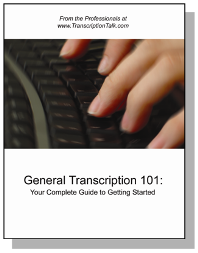Commas are one of the most important – as well as overused and misused – punctuation marks in English grammar. There are dozens of situations that call for commas and an equal number of situations where a comma should not be used. While the use of commas may seem confusing, understanding the actual rules around them eliminates a lot of the ambiguity and provides guidance for making the decision on how to punctuate convuluted sentences.
To start, let's look at using commas with conjunctions to join independent clauses.
Shaina talked about coordinating conjunctions and their role once before. As she mentioned, a comma should be used before a conjunction that joins two independent clauses. As with most of the English language, there are exceptions to this rule, such as when the comma is left out as a matter of style. However, while a comma may be used after "so" at the beginning of a sentence (when it is functioning as an introductory word rather than a conjunction), it is extremely rare to put a comma after coordinating conjunctions.
The following sentences are some examples of properly using commas and coordinating conjunctions:
Transcription Talk is a daily blog for current transcriptionists, and it's a resource for those looking to work at home.
My headphones broke this week, but I was able to exchange them for new ones.
She ate dinner with her family and she took a walk with friends. (Because both sides of the conjunction are equal, the comma can be left off stylistically.)
And after reading through the tutorial, I decided to try it for myself.
So, I think I might try medical transcription after all. (You will need to use your judgement in situations such as these based on the tone of the speaker and the preceding sentence. If the speaker says, for example, "There is a lot of opportunity still in medical transcription. So I think I might try it after all," it's probably best to join the two sentences with a comma and not use a comma after so. However, if she's using it as an introductory word to broach the subject, you would use the comma.)
She had worked all day, so she really didn't feel like accepting additional work.
While it's important to guard against overusing commas, it's also important to guard against underusing them, which results in run-on sentences.
This is just the tip of the iceberg when it comes to comma usage, so I hope you'll stick around as we look at some of the other common uses in future posts!
Tuesday, July 29, 2008
A Dozen Uses for Commas, Part 1
Posted by Mandi @ Life Your Way at 5:45 AM
Labels: commas, grammar and spelling, punctuation
Subscribe to:
Post Comments (Atom)









































5 Comments:
Its amazing post for all the learners.I was busy with family but yes whenever i visit the website i learn so many new things like this post your shared.Thanks.
The awesome submit for the pupils. My partner and i have been active together with household yet sure when my partner and also more visit https://www.biowritingservice.com/our-bio-writing-samples/ my partner and i understand numerous fresh things such as this kind of submit the contributed.
There is the transcription talk with which you can enjoy the best resource plan from this zone. You can get the idea about the productivity and after visit page you can be able to enjoy the best product reviews here.
The need for the complete and order form of comma is necessary. There are many people who did not know how to use such comma in grammar and make its wrong use. This mention in http://www.personalstatementeditors.com/personal-statement-editing-services/ for many ones.
Decent blog, Here you convey the immense data about the instructing and learning You get an opportunity to learn excessively one of a kind and gainful data amid your stay for considering in abroad. You can check this website for their understudies.
Post a Comment